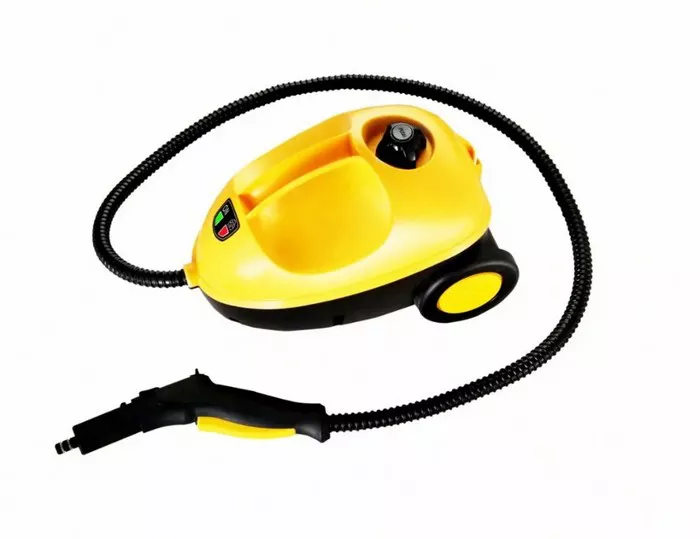Steam cleaners are powerful tools for cleaning various surfaces around the home or workplace. Their ability to harness the cleaning power of steam makes them effective for removing dirt, grime, and even some stubborn stains. However, while steam cleaners are versatile and efficient, there are certain surfaces and materials that should not be subjected to steam cleaning. Understanding what not to use a steam cleaner on is essential for preventing damage and ensuring optimal cleaning results. Below are important guidelines to keep in mind when using a steam cleaner:
Electrical Appliances
Warn against using steam cleaners on electrical appliances, such as TVs, computers, or stereos, as the moisture could damage sensitive electronic components and pose an electrical hazard. The combination of water and electricity is a recipe for disaster and can result in permanent damage to the appliance or even a safety hazard for the user.
Delicate Fabrics
Caution against using steam cleaners on delicate fabrics like silk, velvet, or certain types of wool. The high heat and moisture from steam can cause shrinkage, distortion, or color bleeding in these materials. Delicate fabrics require gentle cleaning methods to preserve their appearance and integrity, and steam cleaning may not be suitable for such items.
Unsealed Hardwood Floors
Advise against using steam cleaners on unsealed or waxed hardwood floors, as the moisture can seep into the wood and cause warping, swelling, or discoloration. Hardwood floors are an investment in any home, and proper care is essential to maintain their beauty and longevity. Using a steam cleaner on unsealed hardwood floors can result in costly damage that may require refinishing or replacement.
Porous Surfaces
Mention that steam cleaners should not be used on porous surfaces like marble, limestone, or unglazed ceramic tiles. The steam can penetrate the pores and cause damage or discoloration to the surface. Porous surfaces require specialized cleaning techniques to prevent damage and maintain their appearance over time.
Painted Surfaces
Warn against using steam cleaners on painted surfaces, as the heat and moisture can soften or strip away the paint, leading to peeling or blistering. Painted surfaces, whether walls, furniture, or décor, require gentle cleaning methods to preserve their finish and appearance. Using a steam cleaner on painted surfaces can result in costly damage that may require repainting or refinishing.
Sensitive Electronics
Emphasize the importance of avoiding steam cleaners near sensitive electronic devices like speakers, gaming consoles, or smart home devices, as moisture can cause malfunction or permanent damage. Electronic devices contain delicate components that can be easily damaged by exposure to moisture. Using a steam cleaner near electronic devices poses a significant risk of damage and should be avoided at all costs.
Dry-clean Only Items
Remind users not to use steam cleaners on items labeled as “dry-clean only.” Steam can alter the texture and appearance of these items and may void any warranties or care instructions. Dry-clean only items require specialized care to maintain their appearance and integrity, and steam cleaning may not be suitable for such items.
Stained or Water-Sensitive Materials
Caution against using steam cleaners on materials that are sensitive to water or prone to staining, such as untreated leather, suede, or water-based paint. These materials require specialized cleaning methods to prevent damage and maintain their appearance over time. Using a steam cleaner on stained or water-sensitive materials can result in permanent damage or discoloration.
Grout Seams in Old Tile Floors
Mention that while steam cleaners can be effective for cleaning tile floors, they should not be used on old or damaged grout seams, as the moisture can weaken or dislodge the grout. Grout is essential for keeping tiles in place and preventing water damage, and damaged grout can lead to costly repairs. Using a steam cleaner on old or damaged grout seams can exacerbate existing issues and should be avoided.
Plastic or Vinyl Surfaces
Advise against using steam cleaners on plastic or vinyl surfaces, as the heat can cause these materials to warp, soften, or become discolored. Plastic and vinyl surfaces are commonly found in kitchens, bathrooms, and other areas of the home, and proper care is essential to maintain their appearance and integrity. Using a steam cleaner on plastic or vinyl surfaces can result in costly damage that may require replacement.
Conclusion
In conclusion, while steam cleaners are versatile and efficient cleaning tools, there are certain surfaces and materials that should not be subjected to steam cleaning. By following these guidelines and exercising caution, users can prevent damage and ensure optimal cleaning results. Proper care and maintenance of surfaces and materials will help prolong their lifespan and preserve their appearance for years to come.

